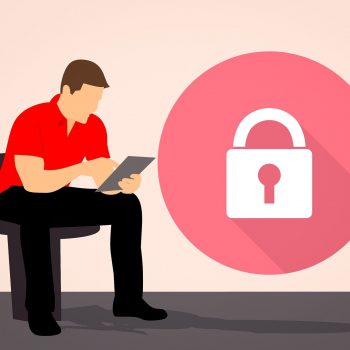
After a serious cyber attack, the district of Anhalt-Bitterfeld discovered the disaster. A disaster due to a cyber attack - a process that is so far unique in Germany. Comment from Dirk Arendt, Head of Government, Public & Healthcare at Trend Micro Germany.
After a serious cyber attack, the district of Anhalt-Bitterfeld discovered the disaster. A disaster as a result of a cyber attack - a process that is so far unique in Germany. The digital meets real life. As symbolic as this step may seem with regard to the state of digitization and IT security in public administration, it is ultimately only correct, pragmatic and consistent. Ultimately, it enables the authorities to access additional resources more easily in order to get the situation under control again as quickly as possible.
On July 26.07.2021th, XNUMX still an emergency infrastructure
As a result of the attack, the administration of the district with around 157.000 inhabitants is practically inactive for the first two weeks. Among other things, no notices can be issued and no social and maintenance benefits can be paid out. With the help of an emergency infrastructure, the administrative operations of the district are partially operational again. For example, a vehicle registration is still not possible on July 26.07.2021th, XNUMX.
So many citizens suffer directly from the short-term consequences. But the medium- and long-term effects are possibly even more devastating: If such elementary basic tasks can no longer be fulfilled, this calls into question the basic efficiency of the state. The events thus have the potential to seriously affect the trust of the citizens. Will this ultimately affect the further progress of digitization?
Can that slow down digitization?
Of course, it is still far too early to speculate about specific causes and responsibilities. Nevertheless, the current attacks show us some problem areas that we urgently need to address:
- First, attacks on digital infrastructures are increasingly affecting the physical world. Whether hospitals, gasoline pipelines or authorities are attacked - due to the increasing networking of all areas of life, we could all become victims of cyberattacks even more frequently in the future. It is all the more important that we as a state and society face this challenge.
- Second, it shows that good preparation is essential for digital as well as physical disasters. Damage can only be minimized and repaired as quickly as possible if there are plans for an emergency. In cyberspace, this includes the tools required for rapid detection and reaction to attacks. We need to invest more in these infrastructures. The bright spot is that, unlike many other disasters, cyber attacks are not acts of God. We have a real chance of preventing such incidents if we really want to.
- Thirdly, municipal institutions in particular are still a weak point in the structure of digital administration. While there is increasing investment in digital infrastructures and, in particular, in securing them at the federal and state level, for example through the creation of CERTs, municipalities and districts are often lagging behind. It is precisely these authorities that are particularly present in people's everyday lives and system failures quickly have immediate consequences for the individual. Of course, municipalities only have limited financial and human resources. But there are also solutions for this - for example, IT security services can also be obtained as a “managed service” from highly qualified and specialized partners. This allows professional cyber defense even with small budgets.
After such attacks, some may reflexively blame “digitization” and doubt whether it really makes sense to push it further. I would like to disagree with that: We will no longer be able to do without digital processes in the future. But it is time to finally get it right, to invest in good solutions and to consider security as an important cross-cutting issue right from the start.
More at TrendMicro.com
About Trend Micro As one of the world's leading providers of IT security, Trend Micro helps create a secure world for digital data exchange. With over 30 years of security expertise, global threat research, and constant innovation, Trend Micro offers protection for businesses, government agencies, and consumers. Thanks to our XGen™ security strategy, our solutions benefit from a cross-generational combination of defense techniques optimized for leading-edge environments. Networked threat information enables better and faster protection. Optimized for cloud workloads, endpoints, email, the IIoT and networks, our connected solutions provide centralized visibility across the entire enterprise for faster threat detection and response.
